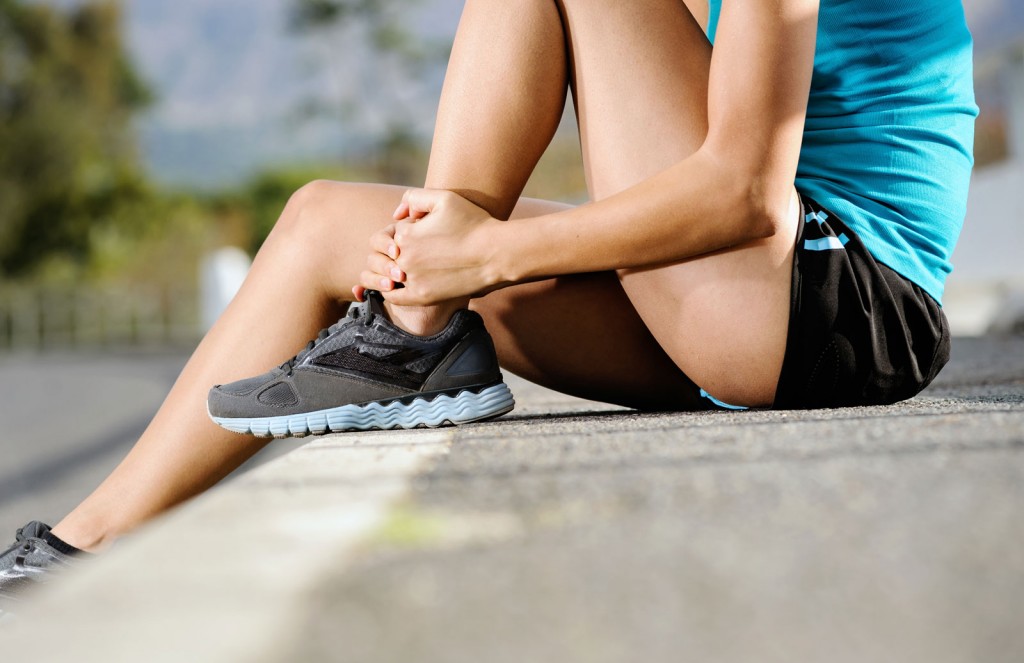Undoubtedly, running provides peerless benefits that are hard to miss.
However, if you are not careful, it can also cause injuries that might require you to visit orthopaedic specialists.
Statistics estimate a whopping 80 percent of runners get injured yearly.
Most injuries can be attributed to overuse, training changes, and weak hips, among others.
Below are some of the common injuries that plague runners, likely culprits, preventative measures, and possible treatment options.
Ankle Sprain
When the ankle rolls outward or in, stretching the ligament in the process, a sprain occurs.
Potholes, tree branches, curbs, and sometimes an unfortunate landing are just some of the likely causes.
The road to recovery can be long but doing balance exercises like the single-legged squats are ideal to help strengthen the muscles while recovering. Thorough rest is also recommended. Depending on the severity, you might need to schedule an appointment with orthopaedic specialists for a more specific and effective treatment plan.
Achilles Tendinitis
The swelling of the tissues that connects the heel to the lower leg muscles can be attributed to a lot of things—improper footwear, a naturally flat foot, hasty mileage increase, and tight calf muscles to name a few.
To keep Achilles tendinitis at bay, stretching the calf muscles after working out should be done. In addition, take it easy on the hill climbing as it can put unwanted stress on the tendons.
In essence, stretching, anti-inflammatories, and the R.I.C.E. (rest, ice, compression, and elevation) strategy will help you get right back on track in no time.
Shin Splints
If you have been a runner for quite some time, chances are you have experienced a shin splint at one point or another. Characterized by stabbing and aching sensation, shin splints occur when the tendons and muscles covering the shinbone becomes inflamed.
To alleviate the pain and to reduce the swelling, icing the affected area for 15 to 20 minutes is recommended. Elevating the affected leg at night is also advised.
While prevention of the condition is a tad tricky, researchers discovered that shock-absorbing insoles the provide support to the arch will help. Also, wearing sneakers with the right fit is considered ideal.
Patellar Tendinitis
More commonly known as “jumper’s knee,” patellar tendinitis is a common injury that affects distance runners. The condition occurs when tiny tears in the patellar tendon will manifest secondary to overuse.
Likely causes of patellar tendinitis include over-training, too many hill repeats, and overpronation.
Strengthening the quads and hamstrings will help reduce risk of developing the condition. To alleviate pain, putting ice on the knee is recommended. Physical therapy might also be prescribed to help strengthen and soothe the tendon.
Iliotibial Band Syndrome
Iliotibial band syndrome or ITBS is the result when the Iliotibial band (the thick tendon stretching from the pelvic bone to the thigh) becomes inflamed.
Downhill running, weak hips, and increased mileage are often considered the likely culprits.
To ease the pain, show those muscles some love. For starters, foam rolling and doing specific stretches can help reduce both the inflammation and the pain.
Runner’s knee
Patellofemoral pain syndrome or runner’s knee is usually characterized by tender pain experienced behind or around the knee cap.
The condition is often attributed to muscle imbalance, downhill running, weak hips, and repetitive pavement pounding during runs.
Spare yourself from the aches and discomforts of runner’s knee by running only on soft or flat surfaces whenever possible. However, if you already have runner’s knee, experts recommend using a knee brace or taping the knee. Reducing your mileage and taking anti-inflammatory drugs are also treatment options you can look into.












